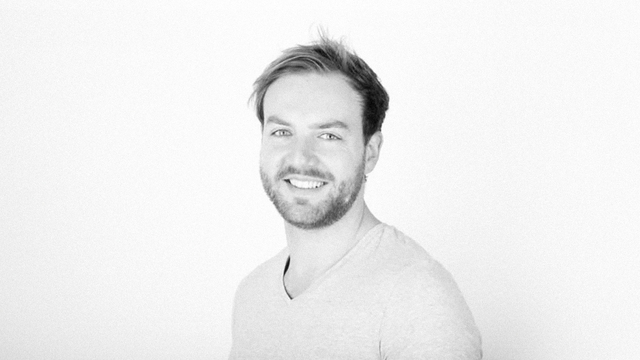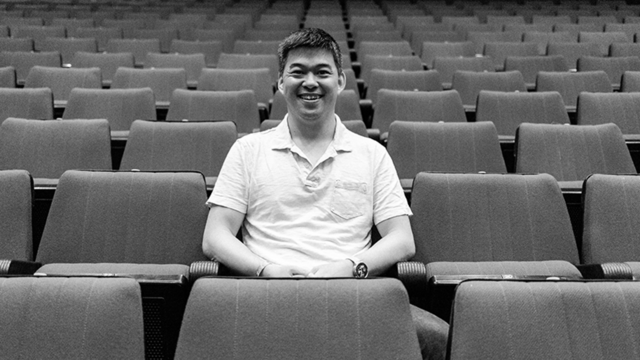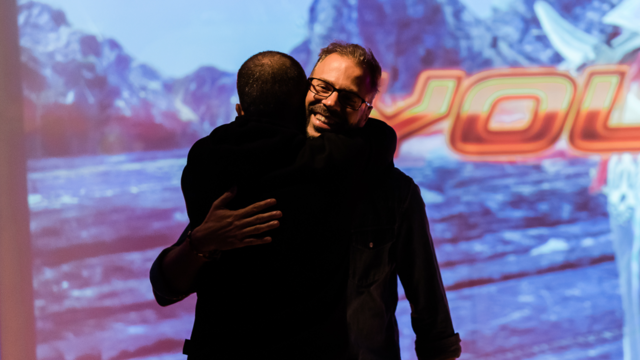Have you ever wondered about the career of Supervising Creative Director? Well, we took matters into our own hands so you don't have to wonder! We talked to Jerome Denjean, who has been working at Blur Studio in Los Angeles for the past 20 years, and is currently the supervising creative director of a show most of you know and love: Love Death and Robots on Netflix.
How did your career journey begin?
I grew up in Lyon, France and didn’t get into CG until my late 20s. I went to college to study English literature and American history but secretly wanted to be a musician. Neither of these two options really worked out for me, but I had started learning photoshop to make fliers and CD covers for the band I was playing in. That got me my very first job doing web and graphic design for a small company in Lyon. It was a great crash course in learning all the major 2D tools at the time, Illustrator, Photoshop and InDesign. One day an architect who was working down the street came to us to ask if we could do some 3d renders of a building he was working on. I volunteered for it because 3d seemed fun, even though I had no idea what I was doing. But I was hooked from that moment on, I just loved it and spent all my free time trying to get better at it. That got me a job in the cinematics department at a game company in Paris called Cryo Interactive where I got to learn about all the different steps of an animation pipeline. But the company was going through financial trouble and after a couple years I decided to try my luck in the United States. I sent my demo reel to this small company in LA called Blur. They flew me in for an interview in 2002 and I’ve been working there ever since.
What’s your favorite part about working there?
There’s so many, but my main reason has always been the people I got to work with here. Blur was about 35 people when I came for my interview, and we’re now at around 120, even though we’ve scaled up to almost 200 for some projects. I’ve seen a lot of people come and go through the company but I’m still getting inspired by their talent and their dedication every day. Tim and Jennifer Miller have created an amazing space for artists to grow, express themselves and challenge each other. I was doing a bit of everything when I was working for Cryo and I thought I was pretty good, but being thrown in the middle of such a pool of world class talent was extremely humbling and inspiring. I had to step up every aspect of my game and I feel extremely fortunate to have been able to grow alongside the people I’ve worked with these past twenty years.
How does a regular day look for you? Take us through it!
It depends on what stage of production we are at during the season. When the season is starting I will spend most of my time gathering pre production material for the episodes, finding some reference or talking with different companies to figure out availability and schedules. Once the companies start working on their episodes I will check in with them at least once a week to make sure they have everything they need and that things are looking good. During the first season of LDR we were juggling 18 episodes so we ended up spending a lot of time on Zoom calls. We are extremely fortunate to work with the best animation studios in the world, so my job is pretty easy. Towards the end of season I will spend a lot of time working on the final coloring and the final polish of each episode to make sure that everything looks consistent across shots and episodes.
Tell us about your involvement with bringing Love, Death and Robots to Life and the creative process behind it.
The idea behind Love Death and Robots was to collaborate with the best animation studios around the world, and to create something that no studio could achieve by themselves. I was interested in the project from the get go cause I saw it as an extension of my role as head of CG at the time, which was to put all our CG supervisors in the best conditions to deliver beautiful projects. I’ve always been attracted to group dynamics and team work since my days of playing in bands, where you can be free to be the best guitarist you want to be when you find complementary musicians who will take care of the vocals, drums, management, etc … I’ve always looked at LDR as the same thing, where all those different studios who each have a unique voice make up a greater product by relying on each other. When we work with Unit Image or Digic for example, I want to put them in the best conditions to do what they do better than everybody else, while at the same time push them out of their comfort zone a little bit because that 's where the magic happens. All those companies who work with us know what they’re doing and we want to work with them
because they can do a lot of things we can’t. So my goal is not to supervise them to do the same thing that we would do at Blur, we strongly believe that it’s the diversity of styles and voices that makes this show special.
How do you stay inspired and motivated?
It would be crazy for me to stand here and say I’m not inspired by the quality of the work coming out of Blur or all the other companies we’re working with. I honestly can’t think of a better job than the one I have right now. It’s weird to think it’s been 20 years since I started working at Blur, but the company was quite different at the time and my role has changed quite a bit from the modeling I was doing the first few years. It’s been great to see Blur grow at the same time as I did. Tim has done something incredible with Deadpool, Terminator and LDR, but I am even more impressed with what he and Jennifer have done together at Blur in creating an incubator for some of the most talented and driven artists in the world, putting them in the best conditions to grow, and push one another and succeed. Again, to me, the key aspect of Blur will always be its culture and its people. I started the same year as Dave Wilson (Blur creative director, director of Bloodshot), Jeff Fowler (director of Sonic 1 and 2), Dan Rice (Director of Photography at Disney) and Kevin Margo (Creative director NVidia) just to name a few, and they all pushed me to be better than I would have been anywhere else. I’m so proud of what we’ve done together at Blur and I’m so proud of what they’ve all become. And there’s many more ready to come out of the ranks every year, whether it’s here or at all the companies we’re working with. How do you not stay inspired when you also get to work with David Fincher, Alberto Mielgo or Robert Valley ?
What advice would you give to someone interested in working as a Creative Director at Blur?
I think too often people obsess over a title or a particular position and lose sight of the bigger picture. I never set out to become a creative director, I don’t think I even knew what the role meant until fairly recently, and honestly I doubt it’s the same job at any other company. But I did want to work for Blur because they looked like a cool bunch of people doing really good work. I started as a character modeler and my role evolved over the years mostly because I wanted to challenge myself into positions that my team needed. I think what is most important is for you to find your band, your tribe, or whatever you want to call it. A group of like minded people who want to create something special and need each other for that, and then work for the team. Push each other to do things you didn’t know you could do, have each other’s back and challenge yourselves to do great things. Once I was at Blur I never wanted to leave and go chase a bigger position at a bigger studio, because to me the mark of success has always been to contribute to Blur’s growth, and to see the studio family get better and bigger together. That means that sometimes you have to work on projects that are not necessarily super high profile, or help out with a role you don’t necessarily love, but if you do that for your team, you can really shoot for the stars and expect great things in return. Eventually your role will be what you want it to be, and that’s the best I can wish for anybody starting in this industry.
What about your creative journey, reader? Don't forget you can apply for a free ticket for Career Camp until April 2, where Blur and many other companies will be present!




